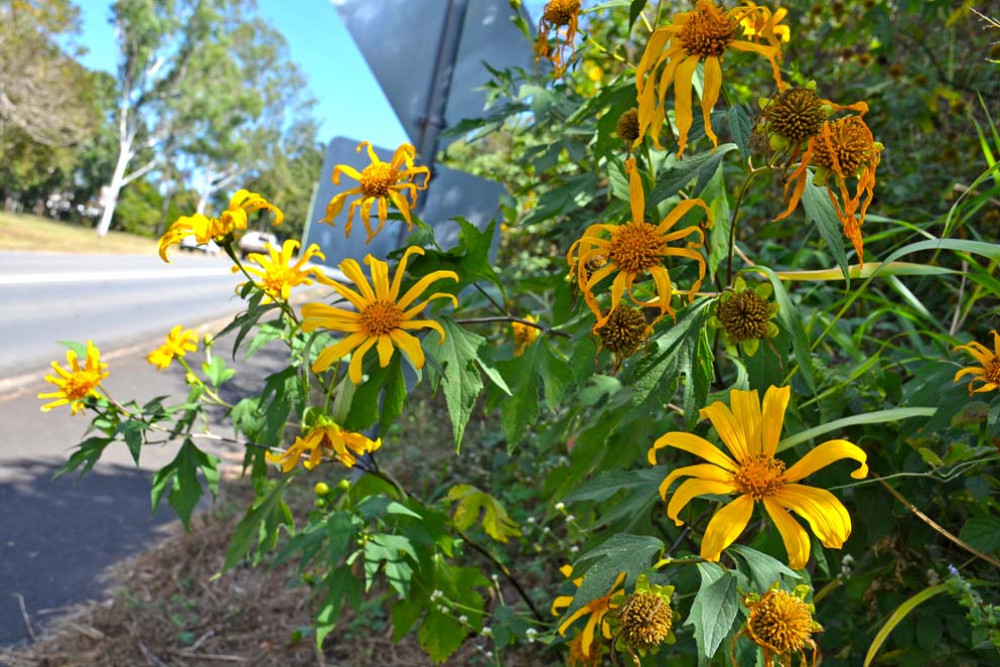Community & Business
5 July, 2024
Invasive Japanese sunflowers plague region
WHILST it’s not considered an invasive weed, Japanese Sunflower is under the close watch of both Mareeba Shire Council and Tablelands Regional Council.

Thought to have been brought in as an ornamental plant, it is believed to have then spread into the environment and thrived in the tropical climate.
Japanese Sunflower is now considered an “environmental weed” but is not a prohibited or restricted plant.
The plant is native to Central America and is common in Far North Queensland, coastal areas of Queensland and northern New South Wales.
It can be seen along roadsides, and at disturbed sites and fire degraded areas. The species is spread via seeds, which can be carried by animals, waterways, garden waste and contaminated agricultural produce.
Japanese sunflower outcompetes native vegetation as it forms dense thickets and can grow up to three metres tall.
TRC Natural Asset Management Committee chair Cr Maree Baade said environmental weeds were part of the lowest priority category they monitored and controlled.
She said it was a common invasive plant that favoured roadsides and embankments.
“In these areas it out competes native vegetation however, compared to many other invasive species its impact is quite low.”
“We review our priorities regularly and this may change in the future. We do not have a specific action plan for Japanese Sunflower however we are spraying it on road verges,” she said.
Under the Biosecurity Act 2014 Japanese Sunflower is not a prohibited or restricted invasive plant, however at a local level, Cr Baade said the Tablelands Biosecurity Plan was due for review.
“During the consultation, research and review process we will consider the best options to control Japanese Sunflower and other existing and emerging weeds in our region,” she said.
To help stop the spread, landowners are encouraged to dig up small infestations and plants – it can be easily removed when young.
Cr Baade said plants required herbicide application when infestations were larger.
“As with most weeds, avoid disturbing the soil and stressing vegetation as these encourage opportunistic weed infestations,” she advised.
Mareeba Shire Council, like TRC, has its own Community Biosecurity Plan 2020-2025 which it follows.
Mayor Angela Toppin said the plan aimed to unite the efforts across all sectors of the local community by providing a framework for effective and targeted biosecurity management within the Mareeba Local Government Area.
The plan recognises 42 species of invasive plants that are found in or may affect the Mareeba local government area, including Japanese Sunflower (Tithonia diversifolia).
“Council has 17 invasive plant species with targeted action plans, including Amazon frogbit, Gamba grass and Lantana which pose a significant risk to the environment and industries,” Mayor Toppin said.
“However, Japanese sunflower is not considered to be a Weed of National Significance and it is not classed as prohibited or restricted under the Biosecurity Act 2014 (Qld).
“Council will continue to monitor this invasive plant and update the plan as required. Council also carries out opportunistic control on roadsides and reserves to combat a range of invasive plant species. Everyone has a responsibility to manage biosecurity risks.”


